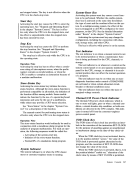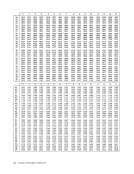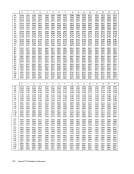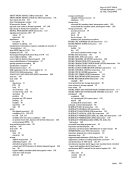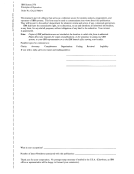or a channel status word cause a match to be indicat ed depends on the model.
The"IC" setting causes address comparison to be
performed when main storage is addressed to fetch
an instruction. The low-order bit of the addressset ting mayor may not be ignored. The match is indi cated only when the first byte of the instruction is
fetched from the selected location. It is not indicated
for the instruction designated by EXECUTE.
Depending on the model and the type ofrefer ence, address comparison may be performed on logi cal, real, or absolute addresses, or controls may be
provided to specify the type of address.
The address-com pare-control settings can be
changed without disruptingCPU operations other
than causing the address-comparison stop.
Check-Stop Indicator
The check-stop indicator is on when theCPU is in
the check-stop state. The check-stop indicator may
be a separate indicator, or some models may use a
combination of other indicators to signal thecheck stop state. Performance of CPU reset turns off the
indicator. The manual indicator may also be on in
the check-stop state.
Configuration Controls
Configuration controls provide a means for setting
and controlling the configuration of the system.Some of these controls are associated specifically
with mUltiprocessing. The detailed function provided
depends on the model.
Display-and-Enter Controls
The system console provides controls andproce dures to permit the operator to display and enter
information in main storage, the general,floating point, and control registers, the PSW, and the keys
in storage. TheCPU must first be placed in the
stopped state.
The display-and-enter functions are provided on
some models by means of controls on the operator
section of the system controlpanel; on other models,
they are provided by the use of the console device.
The CRT -menu-selection method may be provided
to facilitate the selection of storage facilities and
addresses.
Controls may be provided for data formatting,
checking, and error indication by means ofinterac tive procedures used on a keyboard-printer or a
keyboard-CRT device. In some models,enter-and display operations cause the manual indicator to be
turned off and may cause the start and restart keys
tob(! inoperative.
Main storage addresses for display-and-enter
operations are real addresses when dynamic address
translation is specified.Some models also include
the capability of specifying a logical or absolutead dress.
Emergency-Pull Switch
Activating the emergency-pull switch turns off all
power beyond the power-entry terminal on every
unit that is part of the system or that can be
switched onto the system.
The switch latches in the out position and can be
restored to its in position only by maintenanceper sonnel.
When the emergency-pull switch is in the out
position, the power-on key is ineffective.
Enable-System-Clear Key
Activating the enable-system-clear key, inconjunc tion with the load or system-reset key, results in the
performance of the system-clear-reset functions
described in detail in"Resets" in the chapter "System Control." In some models, the combination
of the enable-system-clear key with the load key or
the system-reset key is provided as an integrated
selectable function.
IMPL Controls
Controls are provided in some models for initial
microprogram loading (IMPL). These controls are
model-dependent.
Interrupt Key
Activating the interrupt key causes anexternal interruption condition to be generated.
The interruption is taken when theCPU is ena bled for the interruption and is in the operating
state. Otherwise, the interruption request remains
pending.
The interrupt key is effective while power is on
the system.
Load Indicator
The load indicator is on during initial programload ing; it goes on when the load key is activated and
goes out after the loading of the newPSW is com pleted successfully.
Load Key
Activating the load key causes a reset function to be
performed and initial program loading to be started.
Whether the enable-system-clear control is activated
at the same time determines the type of reset func-System Console 245
The
performed when main storage is addressed to fetch
an instruction. The low-order bit of the address
fetched from the selected location. It is not indicated
for the instruction designated by EXECUTE.
Depending on the model and the type of
provided to specify the type of address.
The address-com pare-control settings can be
changed without disrupting
than causing the address-comparison stop.
Check-Stop Indicator
The check-stop indicator is on when the
the check-stop state. The check-stop indicator may
be a separate indicator, or some models may use a
combination of other indicators to signal the
indicator. The manual indicator may also be on in
the check-stop state.
Configuration Controls
Configuration controls provide a means for setting
and controlling the configuration of the system.
with mUltiprocessing. The detailed function provided
depends on the model.
Display-and-Enter Controls
The system console provides controls and
information in main storage, the general,
in storage. The
stopped state.
The display-and-enter functions are provided on
some models by means of controls on the operator
section of the system control
they are provided by the use of the console device.
The CRT -menu-selection method may be provided
to facilitate the selection of storage facilities and
addresses.
Controls may be provided for data formatting,
checking, and error indication by means of
keyboard-CRT device. In some models,
turned off and may cause the start and restart keys
to
Main storage addresses for display-and-enter
operations are real addresses when dynamic address
translation is specified.
the capability of specifying a logical or absolute
Emergency-Pull Switch
Activating the emergency-pull switch turns off all
power beyond the power-entry terminal on every
unit that is part of the system or that can be
switched onto the system.
The switch latches in the out position and can be
restored to its in position only by maintenance
When the emergency-pull switch is in the out
position, the power-on key is ineffective.
Enable-System-Clear Key
Activating the enable-system-clear key, in
performance of the system-clear-reset functions
described in detail in
of the enable-system-clear key with the load key or
the system-reset key is provided as an integrated
selectable function.
IMPL Controls
Controls are provided in some models for initial
microprogram loading (IMPL). These controls are
model-dependent.
Interrupt Key
Activating the interrupt key causes an
The interruption is taken when the
state. Otherwise, the interruption request remains
pending.
The interrupt key is effective while power is on
the system.
Load Indicator
The load indicator is on during initial program
goes out after the loading of the new
Load Key
Activating the load key causes a reset function to be
performed and initial program loading to be started.
Whether the enable-system-clear control is activated
at the same time determines the type of reset func-
























































































































































































































































